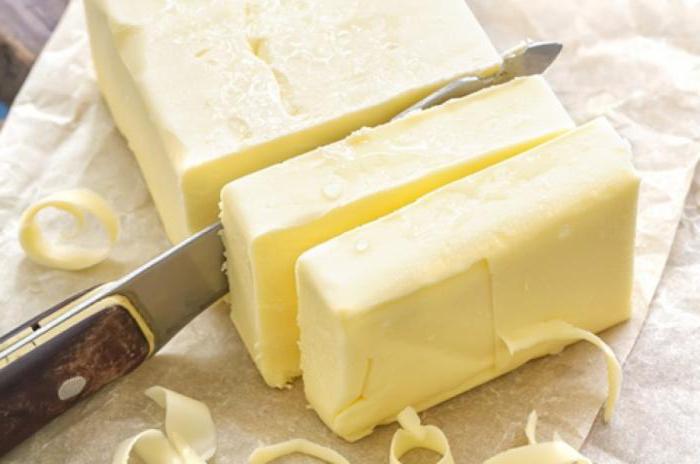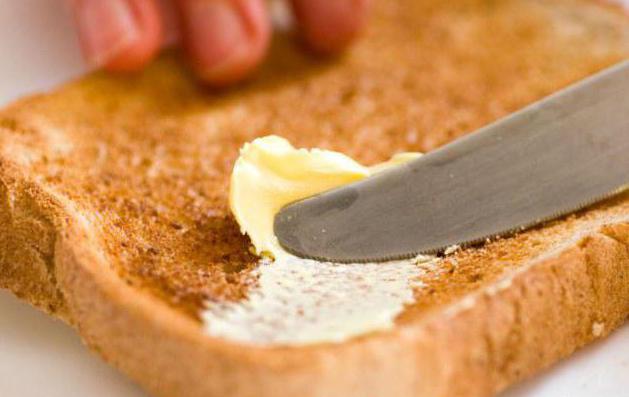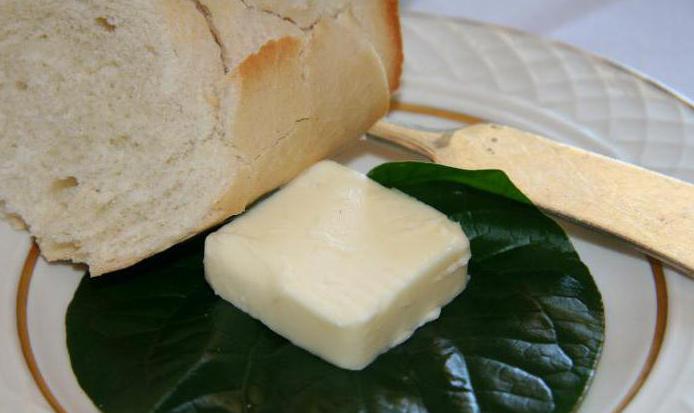Today, a very small number of people are familiar with the concept of “spread”. What is a spread? Where is it used? Some say it is a type of butter, while others say it is margarine. Let's look at these issues.
Spread - what is it?
In fact, the spread (translated from English as “spread”) is not margarine and not butter. Although at the first appearance of this product in our country it was claimed that this is a special type of oil - “light”. But about ten years ago, the views on these products changed significantly, because GOST was created, in which it was clearly stated that the spread does not belong to the “oil” category.
As you know, butter is a product that is made from natural cream, cream fat content varies between 50-80%. And the spread, in turn, is made from milk fat or various types of vegetable oil, sometimes it is possible to add other components. By its structure, the spread refers to plastic types of products, and its fat content is in the range of 40-95%.
Due to this difference in fat content, the spreads are divided into two types:
- Spread with a low percentage of fat.
- Spread with a high percentage of fat.
The main element in any spreads is vegetable oil.

Features of vegetable spread
Only 49% (and sometimes even less) of the vegetable spread consists of milk fat, the remaining percentages are various vegetable fats.
When buying a vegetable spread, you must read the composition, since its quality directly depends on the type of vegetable fat that was used to manufacture this product. For example, hydrogenated fat is very dangerous to human health. The danger is manifested in the fact that it contains transisomers that can cause problems with blood vessels and the heart.
To reduce the risk of morbidity when using this type of spread, it is recommended to buy a vegetable spread, which includes palm oil. It does not harm human health, since it is a natural product. You can also pay attention to plant spreads, which include various vitamins.

Features of vegetable-fat spread
The vegetable fat spread is distinguished by the fact that it contains fats obtained from both plants and animal origin.
This type of spread was created to become a substitute for natural oil, but it could not reach its goal.
Vegetable-fat spreads are highly nutritious and low in calories. According to average estimates, 360 kcal is present in 100 grams of produce. It is important to note that in its properties this type of spread is very similar to ordinary margarine.
When creating a high-quality vegetable-fat spread, vegetable fat and only a small fraction of animal fat or its substitutes are generally used.

What kind of spread is better to use?
Spread - what is it? How to choose it right? Despite the different composition, vegetable and vegetable fat spreads can be of the same quality. Therefore, when choosing a spread, you need to focus on the taste, health status and composition of the spread.
For lovers of food with a low percentage of fat, a vegetable-fat spread is great, and those who prefer a more fatty food should pay attention to a vegetable one.
The best spread is one that has a low percentage of trans isomers.
The benefits of using spreads
Spread - what is it? Can it be beneficial for the body? Due to the fact that the spread refers to a low-calorie type of food, but has a high degree of nutrition, it can be used even by women on diets. The benefit of the spread is that it is able to satisfy hunger and not add excess weight.
These products can be stored for a sufficiently long period, after which it is possible to use them raw or add flour products during baking.
The spread contains many vitamins that improve health, slow down the aging process, and prevent the emergence of new diseases.
In addition, the spread is much cheaper than butter and some types of margarine.

How to distinguish oil from spread?
To distinguish the spread from natural oil can be quite easy. The main difference is that in the manufacture of the spread it is added various vegetable fats, food additives, vitamins and, of course, vegetable oil. In addition, this product is divided into several types. This can be determined by the elements present in the product and by the degree of fat content.
You can also note that the spread has fewer calories per 100 grams than oil.
In stores, the packaging of the products indicates whether it is oil or spread. If the package indicates that this is a spread, then there must be an inscription where the variety will be indicated.
Having analyzed these factors, it is very difficult to make a mistake when distinguishing a spread from oil. The only thing that unites them is the similarity of appearance and taste.

Negative points when using the spread
The main negative factor when using the spread is the presence of trans fats in its composition (these fats are formed chemically). Unfortunately, a large percentage of such fats can lead to serious diseases, among them diabetes mellitus, problems with blood vessels and the heart, in complex cases, even the appearance of oncology is possible. In order to avoid such problems, you need to carefully monitor the composition of the spread, in particular the presence of trans fats there and what percentage thereof. Medical workers argue that the spread can only be used if the percentage of trans fats does not exceed 8%. You also need to look at the percentage of fat in that production.
What is included in the spread, its main varieties
The main components of the spread:
- Milk fats.
- Natural and artificial cream.
- Butter.
- Various vegetable oils of both natural origin and obtained artificially.
- All kinds of nutritional supplements and vitamins.
A spread is considered to be of high quality and safe for health if it contains less than 8% trans fats.
Depending on the elements that make up the spread, it is divided into several varieties:
- Creamy-vegetable spread - the amount of milk fat in the composition of the product varies from 50 to 95%.
- Vegetable spread - the amount of milk fat in the composition of the product varies from 15 to 50%.
- Vegetable fat spread - there is no milk fat at all, or does not exceed 15%.

Depending on the amount of fat in the spread, there is another division into types:
- Spreads with a high percentage of fat - fat ranges from 70 to 90%.
- Spreads with an average percentage of fat content - the proportion of fat in the composition from 50 to 69.9%.
- Spreads with a low percentage of fat - fat ranges from 39 to 49.9%.
Although the spread has not surpassed butter in popularity, it is a widely used product. Therefore, before you start negatively regarding the spread, it is recommended to try it. You just need to be sure that this is really a spread, not a fake, and that it is really high quality.
Enjoy your meal!








